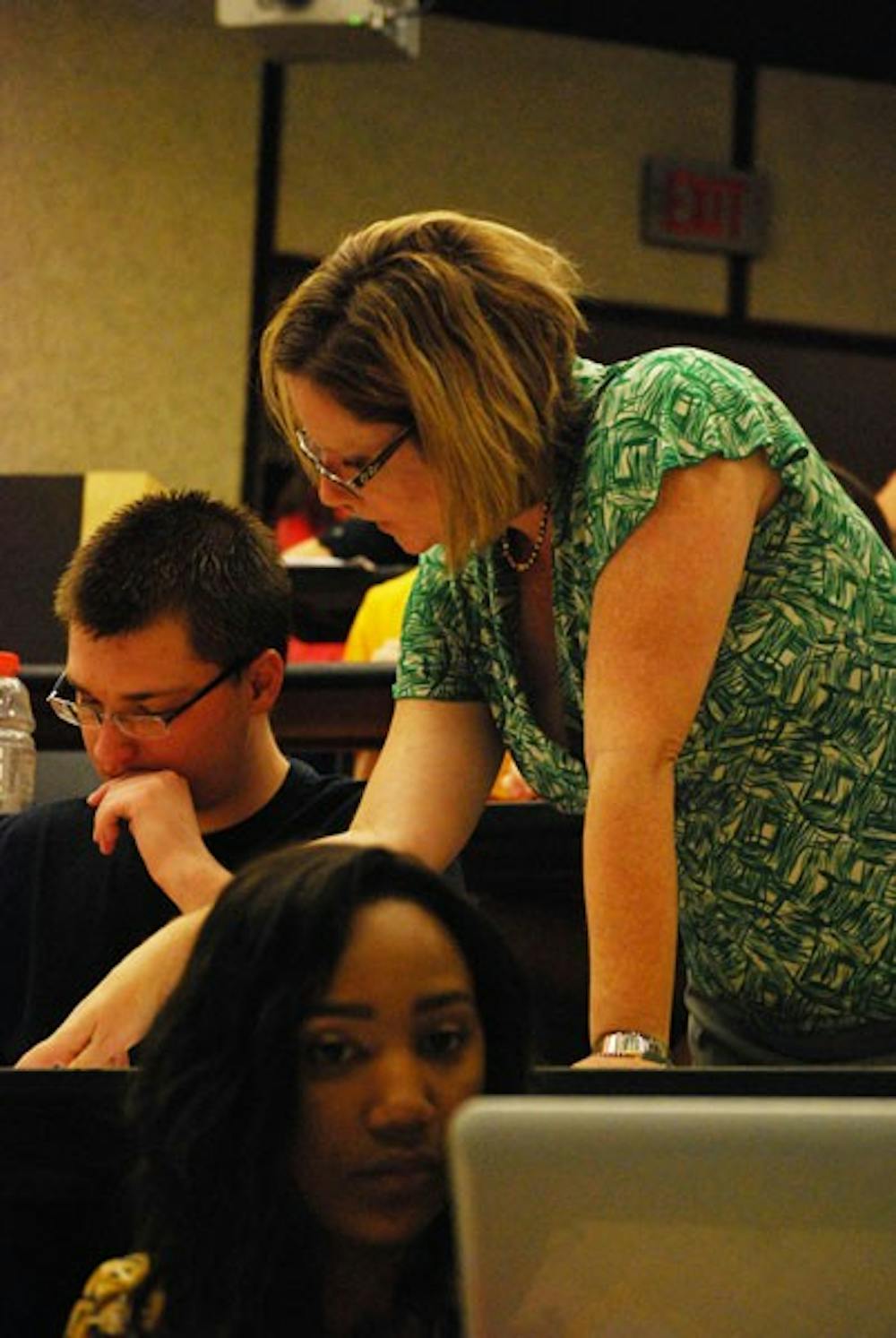 Professor Kelli Gamez Warble explains how to calculate slope and constants to her Fundamentals of Physical Science class on Tuesday morning. (Photo by Murphy Bannerman)
Professor Kelli Gamez Warble explains how to calculate slope and constants to her Fundamentals of Physical Science class on Tuesday morning. (Photo by Murphy Bannerman)The Department of Physics is working to create more high-quality teachers through the Physics Teacher Education Coalition beginning this semester.
This fall, ASU was granted $100,000 a year for three years from the national Physics Teacher Education Coalition to improve the University’s production of physics through the ASU Physics Teacher Pipeline Project.
PhysTEC principal investigator Robert Culbertson explains the gap between the supply and demand of physics teachers.
“ASU has ... 70,000 students and graduates tens of thousands of students a year, ... but we graduate zero to one physics teachers a year,” Culbertson said. “There’s a real high need for physics teachers, one of the highest needs in the category of high school teachers.”
The Department of Physics hired Kelli Gamez Warble as a teacher in residence to help implement the program, which started in September.
Gamez Warble has worked with both the Department of Physics and the Mary Lou Fulton Teachers College to remap a major for physics teachers that would add more physics classes in place of certain education classes.
“Research shows that we need more people who are confident in the physics itself to become teachers, not just the teaching aspect,” she said.
The professors working on PhysTEC have found a lot more interest from the science community at ASU because the new course guidelines add more physics classes to the curriculum, Gamez Warble said.
“There’s still enough (Mary Lou Fulton Teachers College classes) to meet the state minimum requirements, but now it’s a little more focused on physics,” she said.
She promotes the new project by speaking to students in classes throughout the Department of Physics.
“I really raise awareness by going to physics classes on all levels and talking about the courses we offer, the shortages and the benefits of being a teacher,” Gamez Warble said.
Through this project, the Department of Physics will also create more in-field course work, where aspiring physics teachers will go to high school classes and receive hands-on learning experience.
Several co-principal investigators and professors within the Department of Physics also attended a workshop in Colorado last week. There, they developed more ideas about how to train physics teachers and integrate the teachers into the community after graduation, PhysTEC co-principal investigator Darya Makarova said.
“A lot of students are interested,” Makarova said. “They just don’t know about the opportunities.”
When students graduate with a degree or certificate in teaching physics, jobs will most likely be available because of the high demand, Culbertson said.
The American Physical Society has conducted research on the need for physics education.
Approximately two-thirds of new physics teachers lack a physics degree, and the majority of middle school physical science teachers do not have a major or certification in the subject, according to The American Physical Society.
Reach the reporter at cldas@asu.edu




